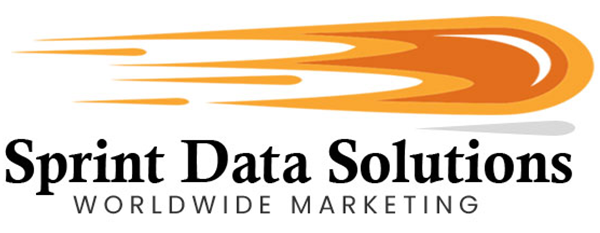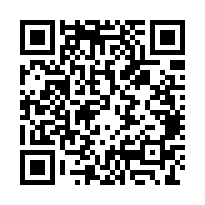Students Are A Growing Marketing Demographic If You Can Reach Them
Education, though often underappreciated by younger generations, remains one of the most defining indicators of a developed and forward-thinking society. Its fundamental purpose is to safeguard accumulated knowledge, nurture intellectual growth, and transmit the wisdom of past generations to the next. This continuous cycle of learning and innovation is what enables civilizations to thrive and evolve. Without education, humanity would be left in the dark—modern medicine would not exist, scientific discoveries would remain unexplored, and transformative technologies like the Internet, satellites, and smartphones would never have seen the light of day. The ability to document knowledge and build upon it is what differentiates modern societies from primitive ones, ensuring progress rather than stagnation.
Nevertheless, the process of education is complex and demanding. For many children, sitting in classrooms seems tedious compared to the lure of unstructured play. Yet, as people age and face the realities of the working world, the value of education becomes undeniable. In today’s economy, expertise and specialization are essential: doctors undergo years of rigorous training to save lives; engineers design safe infrastructure and sophisticated machinery; skilled tradespeople like electricians and plumbers keep homes and cities functional; and software developers create the digital tools that power modern communication and commerce. In nearly every profession, education forms the bedrock of competence and innovation. Far from being a chore, learning is a lifelong investment in both personal fulfillment and the collective advancement of society.

The Challenges
The American educational landscape is undergoing a profound transformation, making it increasingly complex for today’s students to navigate. Once seen as the clear and singular path to a prosperous future, a college degree has traditionally been touted as the ultimate goal. For decades, earning that degree was a near guarantee of stable employment, social mobility, and financial security. However, in recent years, this narrative has begun to shift. While college is still indispensable for certain professions—such as medicine, law, and academia—there has been a notable rise in demand and respect for skilled trades and non-traditional fields.
Industries such as construction, plumbing, HVAC, digital media production, and software development are seeing explosive growth. These roles often provide competitive salaries and, in many cases, more immediate job opportunities without the burden of lengthy academic programs. Moreover, tech-centric disciplines like cybersecurity, UX design, and cloud infrastructure are not only in demand but often come with six-figure salaries, despite requiring certifications or training programs far shorter and more affordable than a four-year college education.
At the same time, financial barriers are becoming increasingly insurmountable for many students considering higher education. The cost of tuition has outpaced inflation, wage growth, and cost-of-living increases for decades. In the 1970s and 1980s, many Baby Boomers could feasibly work a part-time or summer job to pay for an entire year’s worth of tuition. Today, however, even in-state public university tuition can rival the price of a modest home, especially when housing, books, and living expenses are factored in. As a result, student loans have become a virtual requirement, saddling young graduates with debt that can follow them for decades.
This financial reality compounds a broader economic concern: for the first time in modern history, younger generations may not exceed or even match the financial stability of their parents. Wages have stagnated, homeownership is more elusive, and job markets are increasingly competitive. These pressures force students to make difficult decisions—not just about what to study, but whether higher education is even a viable option.
In response, alternative educational models are gaining traction. Apprenticeships, coding bootcamps, online certifications, and community college transfer programs offer more affordable and flexible pathways to career readiness. These models emphasize skills and adaptability over traditional academic prestige, aligning better with the rapidly evolving job market.
Ultimately, what was once a linear journey through education has become a complex web of choices and trade-offs. Students must now weigh not just their passions and abilities, but also economic realities, return on investment, and long-term viability. For parents, educators, and policymakers, adapting to and supporting this new reality is essential if the next generation is to succeed—not only financially, but also holistically.
The Marketing Opportunities
As challenging as the modern educational landscape is for young Americans, it also marks one of the most pivotal stages of personal growth and autonomy. Adolescence—especially during the high school years—often represents the initial foray into financial independence. Many students, armed with generous allowances or part-time job earnings, are now asserting agency over their purchases. Whether it’s subscribing to streaming services, ordering products online, or even managing transportation needs via rideshare apps, this generation is increasingly making consumer decisions without parental oversight.
However, it is the transition to tertiary education—college or university—that truly marks the gateway to full-fledged independence for most young adults. It is at this stage that many will encounter debt for the first time, primarily through student loans. Others may acquire their first credit cards, open checking accounts, or begin navigating the broader complexities of financial responsibility. Despite parental advice or guidance in the background, these individuals are now legally autonomous, signing contracts, managing obligations, and making significant life choices for the first time.
This shift introduces a fresh and fertile demographic for businesses offering products and services tailored to this age group’s evolving needs. Educational tools, financial planning services, tech accessories, food delivery, and even wellness programs become increasingly relevant as students seek solutions that align with their academic, personal, and financial goals. The key to effective marketing in this space lies in understanding their priorities—education, affordability, accessibility, and self-empowerment.
Sprint Data Solutions Worldwide Marketing offers a competitive edge in this market by providing deeply segmented and highly relevant databases of student consumers. These databases categorize students not just by geography or age, but by a spectrum of needs and interests, such as financial assistance requirements, academic majors, lifestyle preferences, and purchasing behavior. Whether your campaign targets first-time credit users, online learners, dorm-based shoppers, or study aid subscribers, Sprint’s intelligence infrastructure allows for precise and strategic outreach, maximizing engagement and conversion.
Educational Seekers
The largest demographic, unsurprisingly, consists of individuals pursuing formal education across a wide spectrum. This group can be further segmented into specific interests—ranging from those aiming to earn undergraduate or graduate degrees at universities, to those pursuing certifications or diplomas from technical institutes or vocational schools. Despite their differences, all share a common goal: obtaining structured education that culminates in a recognized credential validating their knowledge and skills in a particular field. This demographic spans a remarkably broad age range. It includes teenagers entering college for the first time, mid-career professionals enhancing their qualifications through advanced degrees like Master’s or Ph.D. programs, and even older adults embracing lifelong learning by returning to school later in life. Their motivations vary—from career advancement and personal growth to reskilling for a new industry—but the unifying factor is the pursuit of formal, credentialed education.
Student Financial Assistance Seekers
In the past, higher education was significantly more affordable, allowing many students to attend college without the need for substantial financial assistance. A summer job or modest parental savings was often sufficient to cover tuition and living expenses. However, the rising cost of education in recent decades has dramatically changed that landscape. Today, for most students outside of affluent families, attending college necessitates some form of external financial support. Student loans have become a common and often unavoidable component of post-secondary education financing.
Modern students now rely on a range of financial products tailored to meet diverse needs. These include federal and private student loans, scholarships, grants, and work-study programs. Each student’s financial situation, academic goals, and personal circumstances determine the most suitable combination of these options. Additionally, many students must manage day-to-day expenses like food, transportation, and housing while repaying loans or maintaining limited incomes. As a result, financial literacy and budgeting tools—ranging from student-focused banking services to discount programs and financial planning apps—have become essential. These tools help students navigate the complex financial demands of earning a degree while maintaining basic living standards.

Online Class Seekers
The shift to online remote learning, initially driven by health and safety concerns during the pandemic, has since proven to be a transformative advancement in education. For many, especially working professionals who are bound by daytime job commitments, or individuals residing in rural or underserved areas where access to traditional educational institutions is limited, online education offers an invaluable opportunity. It eliminates the need for relocation and the associated financial burdens, such as rent and living expenses near campuses, making learning more accessible and cost-effective.
Today, a vast array of online courses is available, ranging from traditional academic disciplines and vocational training to industry-specific certifications and personal development. This diversity caters to a broad spectrum of learners—from high school graduates and career changers to lifelong learners and corporate employees seeking to upgrade their skills. Consequently, this growing audience creates a thriving market for related products and services. Items such as high-quality headsets, noise-cancelling microphones, webcams, external monitors, and ergonomic chairs have become essential tools for effective remote learning. Additionally, the demand for cybersecurity solutions, such as VPNs and antivirus software, has surged as users seek to protect personal and institutional data while navigating digital learning environments. This evolution signals a sustained opportunity for businesses to tailor offerings toward the expanding and dynamic community of online learners.
Trade School Financial Assistance
It’s no longer just universities that present a steep financial challenge for those pursuing higher education. Increasingly, vocational institutions such as trade schools and technical colleges—despite not offering traditional degree programs—can demand a significant financial investment for certification or diplomas. These institutions often focus on highly specialized and practical skill sets, such as electrical work, HVAC maintenance, welding, or medical assisting. These trades are not only in high demand due to a nationwide labor shortage but also critical to infrastructure and everyday services. Ironically, while the education is laser-focused on employable skills, the cost can rival that of more academic programs, particularly when accounting for equipment, materials, licensing exams, and lab-based instruction.
Compounding this issue is the financial background of many prospective trade school students. Often, these individuals are pursuing vocational training precisely because of cost barriers to attending a four-year college. As a result, they are more likely to face difficulties securing loans or affording tuition upfront. This makes the availability of financial aid, flexible payment plans, and targeted student support services—such as time management tools, budgeting resources, and job placement assistance—not just helpful but essential. These offerings can dramatically affect both enrollment and graduation outcomes, helping students transform technical training into a viable, long-term career path.
Student Debt Leads
For college graduates in the 21st century, student loan debt has become a defining financial burden, often amounting to tens or even hundreds of thousands of dollars. This debt can delay or derail major life milestones such as homeownership, starting a business, or even beginning a family. If the next generation is to build stable, fulfilling lives and participate fully in the economy—purchasing vehicles, buying homes, and investing in their futures—addressing student loan debt must be more than a personal concern; it must be a public and financial priority.
Students and recent graduates are especially open to tools and services that can alleviate financial pressure. Offerings such as income-driven repayment plans, loan refinancing, and debt forgiveness programs are essential, but so are practical, everyday solutions. Access to financial literacy resources, budget-friendly lifestyle options, and digital tools for tracking expenses can make a significant difference. Moreover, services that provide affordable access to essentials like food, clothing, healthcare, and travel can help debt-burdened students stretch their budgets further while staying on track financially. Tackling student debt is not just about repayment—it’s about creating a sustainable ecosystem that supports financial wellness from graduation onward.
Student Continuing Education Seekers
For many individuals, the pursuit of education has long been a cherished goal—one that was often postponed in favor of more immediate responsibilities such as raising children, building a career, or managing household obligations. As life moved forward and those initial responsibilities lessened—children grew up, moved out, and started families of their own—the idea of returning to the classroom often reemerges, this time as a deeply personal aspiration rather than a necessity.
Older adults re-entering the academic world represent a unique and growing demographic. Unlike younger students who may be focused on degrees for job advancement, these learners are typically motivated by a love of knowledge, personal enrichment, or the desire to fulfill a long-held dream. Many of them are financially secure, meaning that the cost of tuition and materials poses less of a barrier. As a result, they are often eager to explore flexible, intellectually stimulating programs that fit their schedules and interests.
This group of continuing education seekers is also highly receptive to a variety of support services and products designed to enhance their learning journey. Whether it’s digital learning tools, comfortable study environments, or wellness resources tailored to their age group, these returning students value experiences that respect their life experience while fostering a renewed sense of discovery and purpose.
College Location
Each year, college acceptance brings with it a major transition for many students—not just academically, but geographically. Moving to a new city or town means adjusting to unfamiliar surroundings, routines, and resources. For local businesses, this influx of incoming students represents a recurring and valuable opportunity to engage with a fresh, receptive market. These students often arrive with immediate needs—housing essentials, food options, health and wellness services, social venues, and more. Restaurants can attract new regulars, convenience and grocery stores can fulfill daily necessities, and service providers like laundromats, gyms, and salons can become part of students’ routines. By gaining timely access to data on incoming students at specific locations, businesses can tailor their outreach strategies with precision, positioning themselves as essential parts of the students’ new environment and fostering long-term customer relationships.
College Requirements
Getting accepted into a college—particularly a prestigious, first-choice institution—is often one of the most stressful and complex challenges students face. The admissions process typically demands not only excellent academic performance but also a well-rounded portfolio that includes extracurricular involvement, leadership experience, volunteer work, and compelling personal essays. This holistic review process means that even highly capable students must work diligently to distinguish themselves in a crowded applicant pool. Beyond the admissions requirements, students must also consider critical logistical factors such as tuition costs, scholarship opportunities, housing availability, and the overall cost of living in the area surrounding the campus. Planning for transportation, meal plans, part-time job prospects, and financial aid packages is essential to ensuring a feasible college experience. Given these many pressures and concerns, students and their families often seek support tools, guidance services, and practical resources—from college counseling to student loans to dorm furnishings—that can ease the transition and improve the chances of success. Understanding these multifaceted needs presents a valuable opportunity for marketers to tailor products and services that directly address the challenges of college readiness and student life.
Degree Counselling Or Tuition Assistance
Gaining admission into a school marks just the beginning of a student’s academic journey. From this point forward, consistent effort and commitment become essential—not only to keep up with coursework but also to successfully complete the examinations that lead to earning a degree, diploma, or certificate. While some students may thrive independently, many benefit greatly from additional guidance and resources. Support services such as academic tutoring, mentoring programs, and study workshops can help reinforce subject comprehension. Additionally, degree counseling plays a critical role in helping students make informed decisions about their chosen fields, ensuring alignment with their career goals. Financial aid counseling and tuition assistance can also ease the burden of educational costs, allowing students to focus more on their studies. For those facing academic challenges, these supplemental services often make the difference between struggling and succeeding in their educational pursuits.
Career Placement & Career Counseling
Choosing a career path can be a daunting decision for many individuals, especially during the transition from secondary to tertiary education. While post-secondary students are legally adults, many are still in the process of discovering their strengths, passions, and long-term goals. The pressure to make definitive career choices during this formative period can lead to uncertainty and anxiety. This is where career placement and counseling services play a crucial role. These services not only help students explore various career options but also assess their aptitudes and interests through structured evaluations, workshops, and mentoring programs. In addition to offering career assessments, counselors often provide internships, co-op placements, and job shadowing opportunities that allow students to gain firsthand experience in different industries. Furthermore, access to personalized training programs, resume-building sessions, interview preparation, and exposure to emerging career fields can equip students with the confidence and skills necessary for the evolving job market. By supporting informed decision-making and offering practical tools and resources, these services serve as invaluable bridges between education and meaningful employment.
Military Veterans Seeking Continued Education
Veterans returning to civilian life after military service have made profound sacrifices—not only risking their lives in defense of the country but also giving up years that could have been devoted to education, career development, and personal milestones. Many entered the military straight out of high school, postponing or forgoing post-secondary education in order to serve. Upon their return, transitioning back into civilian society can be challenging, especially when it involves reintegrating into an educational environment they’ve been away from for years. Fortunately, today’s veterans have more access to educational opportunities than ever before, supported by government initiatives such as the Post-9/11 GI Bill, which covers tuition, housing, and other essential costs. This opens the door not only to traditional college degrees but also to vocational training, online certifications, and professional development courses. As a result, there’s a growing need for a wide range of products and services tailored to student veterans. These include not just practical items like laptops, textbooks, and academic software, but also professional attire, transportation solutions, and even mental health support services. Businesses and institutions that recognize and respond to these unique needs can play a key role in supporting veterans on their journey to personal growth, economic independence, and long-term success in civilian life.

How Sprint Data Solutions Worldwide Marketing Can Help
Sprint Data Solutions Worldwide Marketing has built an expansive and meticulously curated contact database that serves as a cornerstone of its targeted marketing strategies. This database is not only internally developed but also enriched through strategic partnerships with other trusted data providers. These alliances significantly extend the breadth and depth of access, enabling clients to reach broader and more nuanced audiences. The foundation of all data acquisition lies in ethical and legally compliant methods—information is sourced exclusively from opt-in mechanisms such as account sign-ups, newsletter subscriptions, voluntary surveys, and the donation of business cards at events. This ensures that every contact included has willingly shared their information, fostering both legal integrity and higher engagement rates. Moreover, the data undergoes continuous audits and updates to maintain its relevance and accuracy, particularly for transient demographics like students, whose status can shift from year to year due to academic cycles.
To enhance the strategic value of this data, Sprint Data Solutions employs advanced artificial intelligence systems integrated with machine learning algorithms. These technologies are crucial for extracting actionable insights from vast datasets, enabling the system to evaluate contacts not just by availability but by predictive engagement potential. Clients benefit from analytics that identify patterns of behavior and interest, allowing them to zero in on individuals or segments with a statistically higher likelihood of responding positively to specific marketing stimuli. This AI-enhanced layer transforms raw contact lists into intelligent marketing tools that optimize client outcomes by marrying reach with relevance.
Geographic segmentation remains one of the most powerful tools in Sprint’s marketing arsenal. Clients can execute campaigns at multiple geographic levels—from sweeping national initiatives to finely targeted local efforts. For example, campaigns can be conducted solely within the New England region, further focused to a specific state like Massachusetts, or even drilled down to neighborhood-specific marketing—such as reaching students in North Cambridge, the vibrant academic district surrounding Harvard University. This kind of localization ensures that outreach efforts align with community dynamics and regional characteristics, boosting campaign precision.
Demographic profiling is another pivotal feature of Sprint’s contact databases, enabling deep segmentation based on a variety of criteria. Whether a campaign requires targeting based on ethnicity—such as Asian American or Hispanic students—or tailoring based on religious affiliation like Jewish or Muslim communities, the database offers the granularity needed for impactful messaging. Economic indicators can also be used to identify low-income students who may be more receptive to scholarship programs, financial assistance, or low-cost services. Furthermore, niche criteria such as medical conditions can be used for health-related marketing—for instance, directing awareness campaigns or product offers to diabetic students. These demographic layers empower marketers to connect with audiences on a personal level, enhancing engagement and fostering more meaningful interactions.
Through its commitment to data quality, ethical sourcing, AI-enhanced analytics, and multi-dimensional targeting capabilities, Sprint Data Solutions Worldwide Marketing delivers a competitive edge to clients seeking highly targeted and high-performing outreach campaigns.
Contact Formats & More
Sprint Data Solutions Worldwide Marketing provides a comprehensive range of database services tailored to the specific contact format requirements of clients. Whether a business is targeting general consumers or corporate entities, the company can supply contact details in various formats to match any marketing strategy. For direct mail campaigns, databases include verified physical mailing addresses segmented by demographic or business type. These lists are optimized for both B2C and B2B outreach, ensuring accurate and relevant targeting. For digital strategies, robust email databases are available that feature individual consumer emails as well as corporate email contacts, offering options for general outreach or department-specific communications. Telephone data services include access to residential numbers for consumer outreach and direct business lines that connect with decision-makers rather than front-desk gatekeepers, enhancing the effectiveness of B2B telemarketing efforts. Additionally, mobile numbers are available to support SMS/text-based marketing initiatives, ensuring broad multichannel coverage.
Beyond contact data, Sprint Data Solutions offers a suite of value-added services designed to support clients through every phase of their marketing initiatives. A standout feature is the company’s turnkey direct mail marketing solution, which simplifies the complex process of executing a campaign from start to finish. This end-to-end service includes campaign planning, graphic design, printing, and mail distribution, all coordinated under one roof. Clients benefit from streamlined communication, faster turnaround times, and cost efficiencies by eliminating the need to coordinate with multiple vendors. Whether a client is new to direct mail or looking to improve the ROI of existing efforts, this integrated solution removes guesswork and ensures that every stage—from concept to delivery—is handled by experienced professionals.
If you offer a product or service tailored for students, reaching the right audience is essential for success. Sprint Data Solutions Worldwide Marketing specializes in providing high-quality, targeted education leads that connect you directly with students who are most likely to engage with your offering. Whether you’re promoting educational tools, career services, lifestyle products, or financial assistance programs, our comprehensive and up-to-date database ensures that your message gets into the right hands. Partner with us to enhance your outreach and see measurable results. Contact Sprint Data Solutions Worldwide Marketing today and start making a meaningful impact in the education sector.






